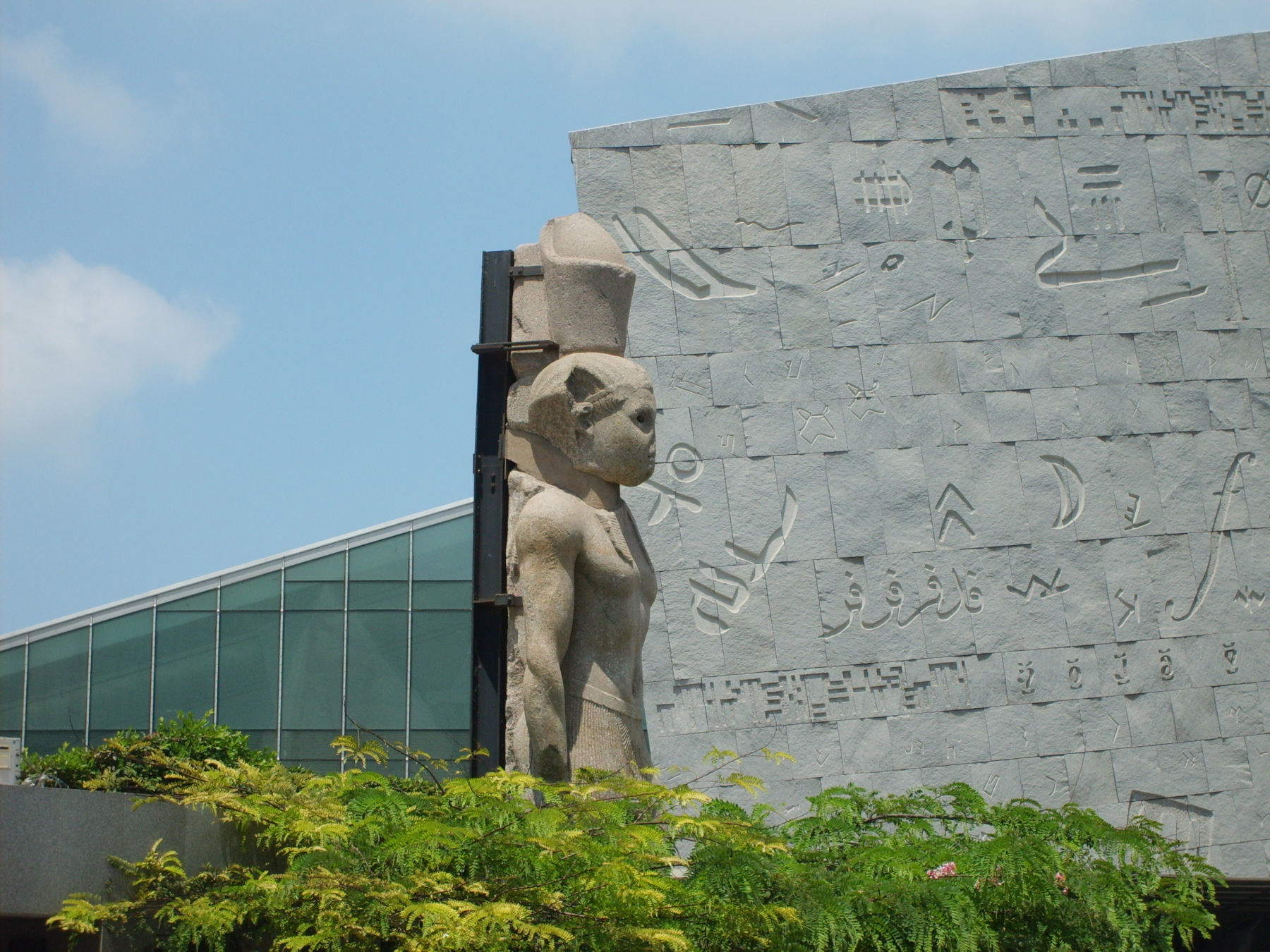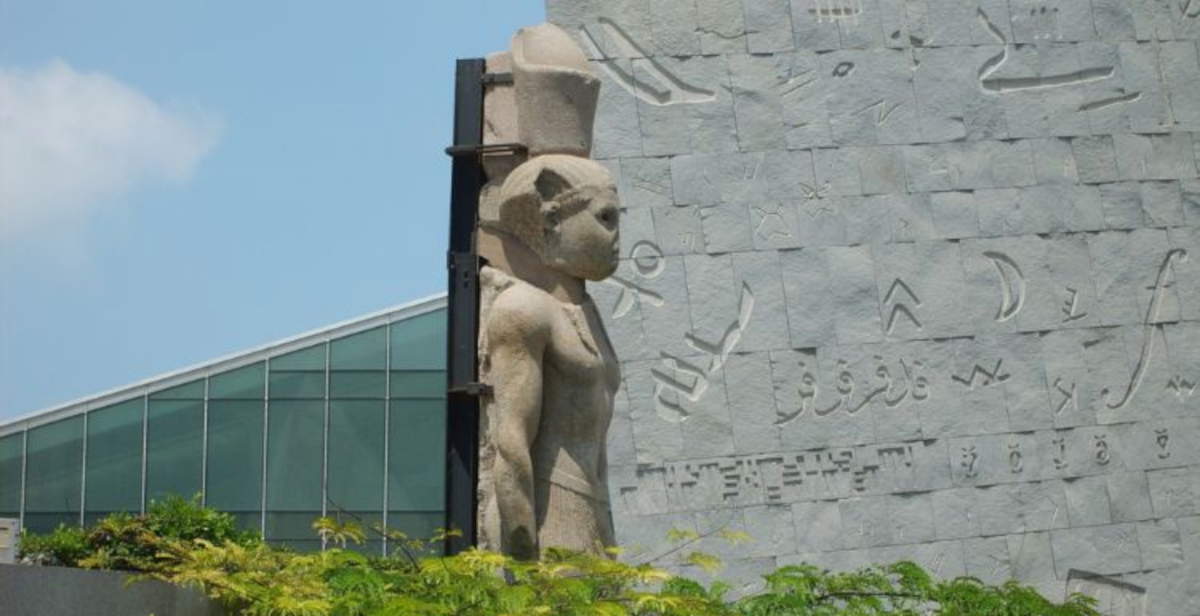The Alexandria Biennial in Egypt will return in September 2026 after a 12-year hiatus. The news, as reported by Artnews magazine, marks the return of one of the most important artistic events on the Egyptian and Mediterranean scene, whose absence has long been felt in international programming. The event will reach its 27th edition, and will feature a curatorial project entrusted to Moataz Nasr, an artist and leading figure in Egyptian contemporary art(you can read more about Nasr here), who previously represented Egypt at the 2017 Venice Biennale.
The title chosen for the new edition is This Too Shall Pass, an expression that invokes an idea of impermanence and transformation, perhaps in dialogue with the event’s own history, marked by interruptions and restarts. The main program will see the participation of 55 artists from countries bordering the Mediterranean, in continuity with the original spirit of an exhibition conceived since its first editions as a space for confrontation between cultures, identities and artistic languages linked to a common geographical area. The Alexandria Biennial was born in 1955, in a particular historical and political context: Egypt was led by then-President Gamal Abdel Nasser, and the new event was conceived as a stage to enhance regional talents. In those years, many artists were looking for a language that could combine contemporary experimentation and national cultural tradition. For this reason, participation was initially limited to artists from countries bordering the Mediterranean, so as to build a coherent artistic network rooted in local identities.
The event spanned decades, becoming one of the longest-running events in the area. However, the Biennial’s path has not been linear. As Artnews adds, in 2011, coinciding with the turmoil of the Egyptian revolution, the review was suspended. The political and social difficulties of those years, related to the collapse of Hosni Mubarak’s regime, made it impossible to ensure continuity for the organization. A brief reopening was attempted in 2014, again in Alexandria, but financial problems and political instability led to a new closure.

After more than a decade, the restart is thus set in a different context, but with the stated intent of keeping true to the original spirit. Nasr, interviewed byArt Newspaper, stressed that the 2026 Biennial will not give up its Mediterranean vocation and will continue to stand as a platform for regional solidarity. At the same time, he indicated the possibility of partly opening participation to artists from other geographical contexts, thus broadening the horizon of a project that remains strongly linked to the Mediterranean but does not intend to exclude external contributions. Alongside the main program, the calendar will include collateral exhibitions spread across Alexandria’s museums, with a focus on emerging Egyptian artists. The aim is to flank the international scope of the review with a local dimension, capable of supporting new generations of creative artists and placing them in a wider circuit of visibility.
The choice of venues for the installations will play a central role. Alexandria, which in ancient times was the cultural and commercial capital of the Mediterranean, will once again become the scene of a dialogue between past and present. The planned venues include spaces of strong symbolic value, such as theRoman amphitheater, the Library of Alexandria and the Citadel of Qaitbay. In this way, the Biennale will be an opportunity to reconnect contemporary artistic activity with a city whose history has been a crossroads of cultural exchange for centuries. After years of suspension, the event’s return is a sign of revitalization for a country that has seen some cultural initiatives shrink in recent years due to internal and external factors. International attention, already ignited by the news of the reopening, could help bring Alexandria back to prominence on the global art scene.
At the same time, the event’s return reopens reflection on the role of biennials as instruments of cultural diplomacy and transnational network building. In the specific case of the Alexandria Biennial, the desire to restore centrality to the Mediterranean is intended to emphasize a common identity, made up of shared historical legacies and contemporary challenges. The project curated by Nasr thus lies between tradition and innovation. On the one hand, it retrieves the legacy of 1955, when the initiative was born with the intention of consolidating the artistic production of a region in search of an autonomous voice. On the other, it introduces elements of openness and experimentation, including artists from different areas and proposing a dialogue with the city’s symbolic spaces.
 |
| Egypt, Alexandria Biennial returns in 2026 after 12 years. There will be 55 artists from across the Mediterranean |
Warning: the translation into English of the original Italian article was created using automatic tools. We undertake to review all articles, but we do not guarantee the total absence of inaccuracies in the translation due to the program. You can find the original by clicking on the ITA button. If you find any mistake,please contact us.